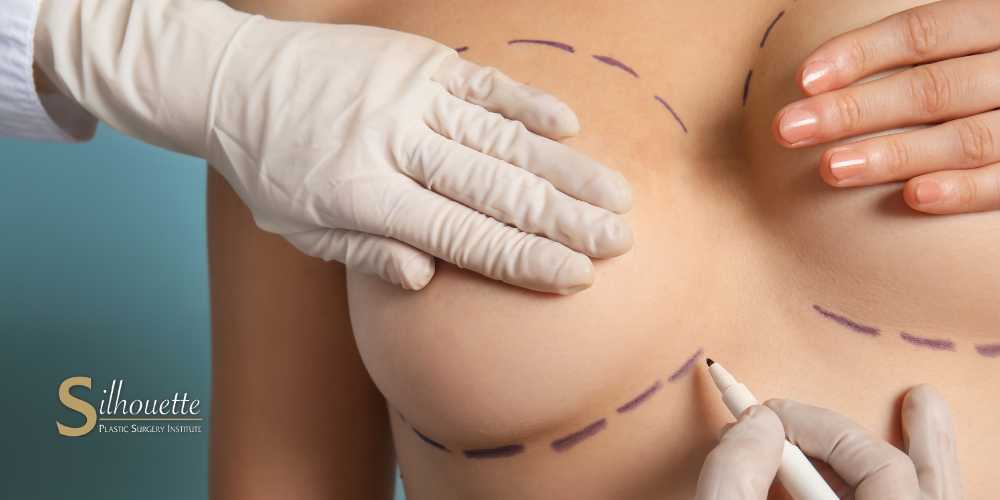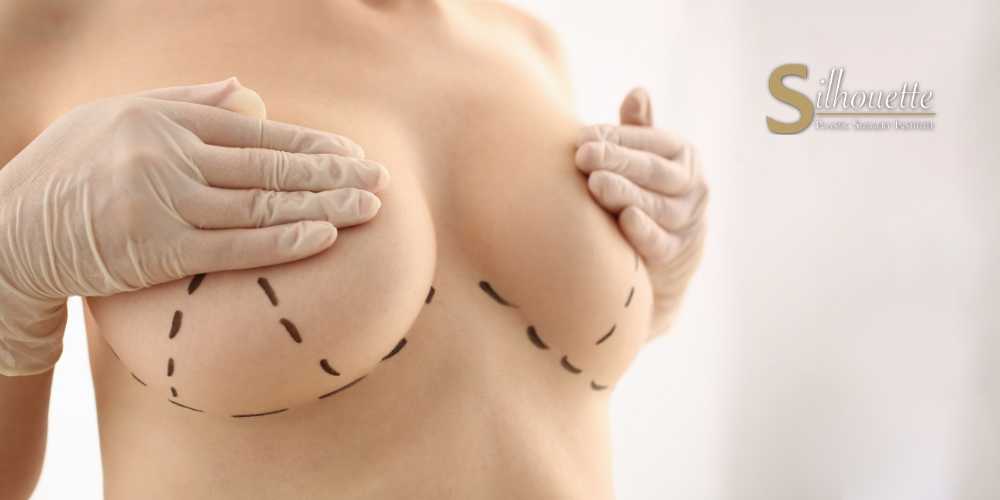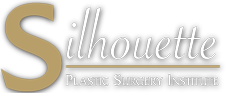Bakersfield Breast Revision
Bakersfield breast revision surgery at Silhouette Plastic Surgery Institute offers specialized procedures for those looking to adjust or improve their breast implants. This breast augmentation revision procedure addresses various concerns, such as capsular contracture, changes in breast size, and implant rupture.
Whether you have silicone implants or saline implants, our skilled surgeons provide personalized solutions, including fat transfer techniques to enhance the results. Breast implant revision in Bakersfield or Orange County, CA, is meticulously performed to ensure patient satisfaction and safety. With our extensive experience in performed procedures, we help patients achieve their desired aesthetic outcomes and restore confidence with every breast implant revision we perform.
If you are considering breast implant revision in Bakersfield, contact Dr. Hootan Daneshmand for a consultation. Call (949) 359-8397.
Best Bakersfield Breast Revision Surgeon
Dr. Hootan Daneshmand, a board-certified plastic surgeon at Silhouette Plastic Surgery Institute, is renowned as the best breast implant revision surgeon in Bakersfield. With extensive experience and a commitment to patient satisfaction, Dr. Daneshmand specializes in correcting breast implant issues and enhancing aesthetics. Patients trust his expertise to achieve natural, harmonious results, ensuring they feel confident and satisfied with their breast augmentation revision.
Breast Revision Before and After
Before breast augmentation revision surgery, patients may feel unhappy with their initial breast augmentation results due to issues like breast implant rupture, capsular contracture, or aesthetic concerns. This dissatisfaction can impact their confidence and overall well-being, prompting them to seek improvements through breast augmentation revision. Consulting with experienced, certified plastic surgeons helps determine the best approach for achieving desired results.
After breast implant revision surgery, patients often experience a notable enhancement in breast appearance and symmetry. The chosen breast surgery addresses previous issues, resulting in a more natural and satisfying look. Recovery from breast implant revision surgery varies, but many patients resume normal activities within a few months, feeling more confident and pleased with the outcome of their breast augmentation revision.
Bakersfield Breast Implant Revision Surgery
When considering breast implant revision surgery, the history of previous breast augmentation holds significant importance. An initial consultation with your surgeon is key to discussing your history, concerns, options, and expectations. These consultations serve as pivotal moments for patients to openly communicate their desires and for surgeons to provide tailored recommendations. By openly discussing options, patients can gain clarity on the next steps in their breast augmentation journey. Whether it’s addressing issues with breast size, implant size, or shape, this meeting lays the groundwork for achieving desired outcomes.
If you are considering breast augmentation in Bakersfield, please contact Silhouette at (949) 359-8397 to schedule your complimentary consultation with our board certified plastic surgeon.
Common Reasons for a Breast Implant Revision After a Breast Augmentation
Common reasons for breast implant revision surgery after breast augmentation include capsular contracture, visible implant rippling, and ruptured breast implants. Other factors involve correcting unsatisfactory results, addressing age-related changes, and opting for a new breast implant type or complete breast implant removal.
Capsular Contracture
Capsular contracture is a common reason many women seek a breast implant revision procedure. This condition occurs when the scar tissue around the implant hardens, causing the breast tissue to tighten and the breast to change shape. The breast implant revision procedure involves removing or releasing the scar tissue, restoring a more natural look and feel to the chest muscle and breast.
If you are in need of capsular contracture repair in Bakersfield, Dr. Daneshmand can help.
Correct Unsatisfactory Results
Correcting unsatisfactory results is a common reason for breast implant revision surgery after breast augmentation. Patients may seek this breast implant revision surgery to address cosmetic concerns such as asymmetry, improper shape, or issues with scar tissue. Breast revision surgeries aim to improve the appearance of the breast implants, ensuring a more satisfactory outcome and aligning with the patient’s desired aesthetic goals.
Contact Dr. Daneshmant to schedule your appointment to discuss options to correct unsatisfactory breast augmentation results and schedule your breast implant revision surgery.
Visible Implant Rippling
Visible rippling is a common reason for breast augmentation revision. This issue occurs when the implant edges become noticeable through the skin, affecting one or both implants. Breast implant revision surgery can smooth out visible rippling, enhancing the overall appearance and feel of the breasts.
If you have visible breast implant rippling, schedule a consultation with Silhouette Plastic Surgery to discuss your revision options.
Old Implants and Age-Related Changes
Old implants and age-related changes are common reasons for breast implant revision surgery after an initial breast augmentation. Over time, breast implants can wear out, leading to complications such as implant rupture or leakage. Natural aging processes, along with pregnancy and surgery after birth, can alter breast tissue, affecting the overall appearance and feel. These changes often prompt women to consider a breast augmentation revision procedure to address their evolving cosmetic needs.
Age-related factors such as weight loss or gain and gravity can impact the position and shape of the breasts. These changes might necessitate a breast lift procedure or adjustments in breast size with larger implants. Issues like the double bubble effect, where the implant shifts below the natural breast crease, can also arise. By undergoing breast implant revision surgery, women can restore a more youthful and aesthetically pleasing breast contour, aligning their appearance with their current body image.
Breast Implants Ruptured
Ruptured breast implants are a common reason for implant revision surgery after a primary breast augmentation. Both silicone and saline implants can experience issues such as implant deflation or leaks, leading to noticeable changes in the appearance of the breasts.
When a rupture occurs, plastic surgery is needed to remove or replace the damaged implant. This procedure helps restore the desired look and feel of the breasts, maintaining their aesthetic appeal and symmetry.
New Implant Type
Many patients seek breast revision surgeries to switch to a new implant type. Over time, advancements in breast implant technology, such as gummy bear implants in Bakersfield, offer improved shape and feel. Silicone implants, known for their natural appearance, are a popular choice among patients who initially chose saline implants. The debate of saline vs silicone implants often leads clients to reconsider their options.
Plastic surgeons often recommend new implant types during breast revision surgeries to enhance breast shape and appearance. Those who were unsatisfied with their original breast implant surgery results can opt for different breast implants to achieve their desired look. This update in implant technology can significantly improve overall satisfaction and aesthetic outcomes.
Breast Implant Removal
Breast implant removal is a common reason for breast implant revision surgery after breast augmentation. Patients may choose implant removal due to changes in personal preference, health concerns, like silicone implant concerns, or complications with their current breast implants.
Plastic surgery for breast implant removal can involve taking out silicone implants and addressing any remaining scar tissue. This procedure helps restore a natural breast appearance and can improve the patient’s overall comfort and satisfaction.
If you are considering breast implant removal in Bakersfield, CA, contact Dr. Hootan and schedule your appointment to discuss your options.

Bakersfield Breast Lift Revision
Breast lift revision is often needed when initial breast surgery results are unsatisfactory. Changes in breast size, shape, or position can prompt patients to seek further adjustments to their original breast lift procedure. Breast lift revision surgery helps achieve a more balanced and youthful appearance.
During a breast lift revision, surgeons address issues such as sagging or unevenness that may persist after the first breast lift procedure. By refining the breast size and contour, the breast lift revision procedure enhances the overall results, providing patients with improved satisfaction and confidence.
For more information about breast lift in Bakersfield, call Silhouette Plastic Surgery today at (949) 359-8397.
Bakersfield Breast Lift Scar Revision
Bakersfield breast lift scar revision surgery improves the appearance of scars from a previous breast lift surgery. The breast lift scare revision procedure refines the scar tissue, making it less visible and enhancing the overall aesthetic result. Typically, clients can determine if they like their results by looking at their healed one year breast lift scars.
Bakersfield Breast Revision Surgery After Mastectomy
Breast revision surgery after a mastectomy is often part of a Bakersfield breast reconstruction. By refining the results, breast revision surgery after a mastectomy helps achieve a more natural and balanced appearance, enhancing the patient’s comfort and confidence in their reconstructed breasts.
Dr. Hootan Daneshmand is a renowned surgeon for breast cancer reconstruction in Bakersfield and Orange Co.
Breast Augmentation Revision Surgery Procedure in Bakersfield, CA
Breast augmentation revision surgery is often needed to correct issues such as breast implant size, placement, or complications from the initial breast augmentation. Many surgeons collaborate with clients to develop a tailored surgical plan that addresses their unique concerns. Most patients can resume activities within a few months after the breast augmentation revision surgery.
Although breast implants are considered lifetime devices, changes in body shape or personal preference may prompt breast augmentation revision. Patients with large implants may require adjustments over time to ensure a harmonious and natural look, enhancing their overall satisfaction and confidence.
Breast Revision Surgery Cost in Bakersfield, CA
In Bakersfield, CA, the cost of breast augmentation revision surgery typically ranges from $6,000 to $12,000, depending on the extent of the breast augmentation revision procedure. For example, minor breast implant revision corrections might cost approximately $6,500, while more comprehensive breast augmentation revisions could be around $10,000 to $12,000. Consulting with local plastic surgeons will provide a more precise estimate based on the specific requirements of the breast augmentation revision surgery.
Requirements for Breast Revision Surgery
Patients seeking breast augmentation revision surgery due to reasons such as dissatisfaction with current results, rupture, or capsular contracture should consult a board-certified plastic surgeon with extensive experience to discuss revision options. Insurance companies may not cover a breast implant revision procedure, making it essential for patients to discuss costs upfront. A thorough consultation will help determine the best course of action for achieving desired outcomes.
For more information on breast surgery requirements, call the Silhouette Plast Surgery Institute today at (949) 359-8397.

